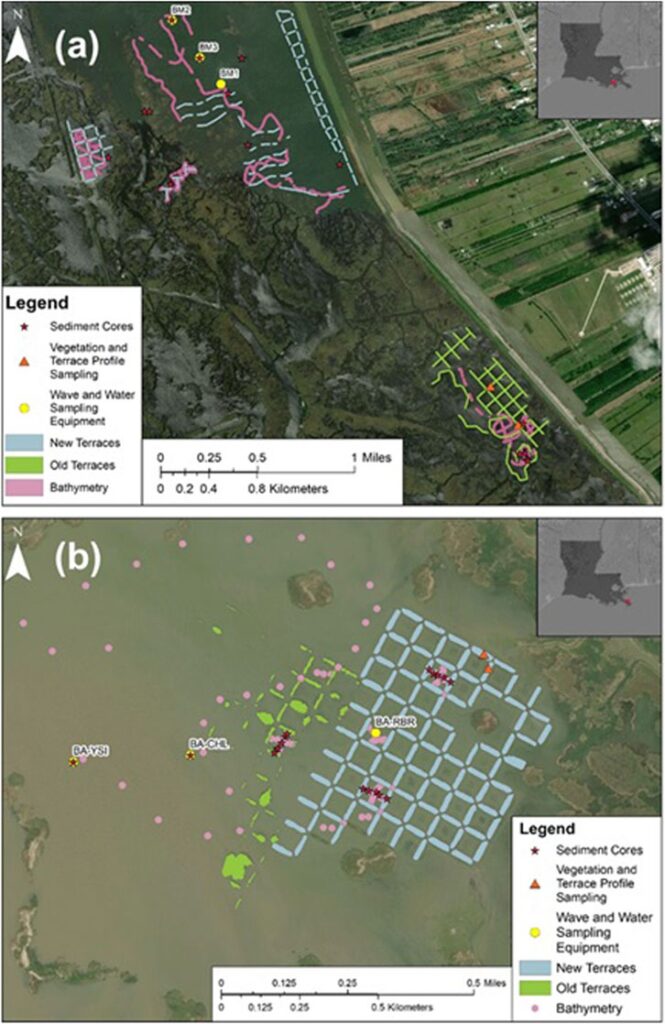The article discusses Louisiana’s ongoing efforts to combat wetland loss and restore coastal areas through the implementation of various restoration projects, particularly marsh terraces. Over 480,000 hectares of marsh have been lost since 1932, with potential losses of up to 1 million hectares in the next 50 years without intervention. The Coastal Protection and Restoration Authority (CPRA) is advancing the Louisiana Coastal Master Plan, which includes projects such as sediment diversions and eco-engineered marsh terraces.
The study emphasizes the importance of terraces—earthen berms that mitigate erosion by reducing wave energy and enhancing habitat for wildlife. The research develops a hydrodynamic and sediment transport model to assess different terrace designs’ stability and effectiveness under storm conditions. Various configurations were evaluated, revealing that box and Chevron 100-meter terraces performed best in terms of sediment retention and erosion resistance.
Field measurements were conducted at Bayou Monnaie and Bay Alexis, focusing on both biotic and abiotic factors influencing terrace efficacy. Results indicated that vegetation significantly impacts terrace stability, with maximum biomass facilitating greater sediment capture. Additionally, sediment type and water depth play critical roles in the terraces’ performance.
The findings provide insights that can aid in optimizing coastal restoration practices not only in Louisiana but also in similar coastal regions globally. Future studies should aim to incorporate stochastic analyses and long-term monitoring to enhance model accuracy and capture the inherent variability in marsh terrace dynamics. Overall, the research underscores the vital role of vegetation in improving terrace stability and ecological benefits within coastal restoration projects.
Source link


